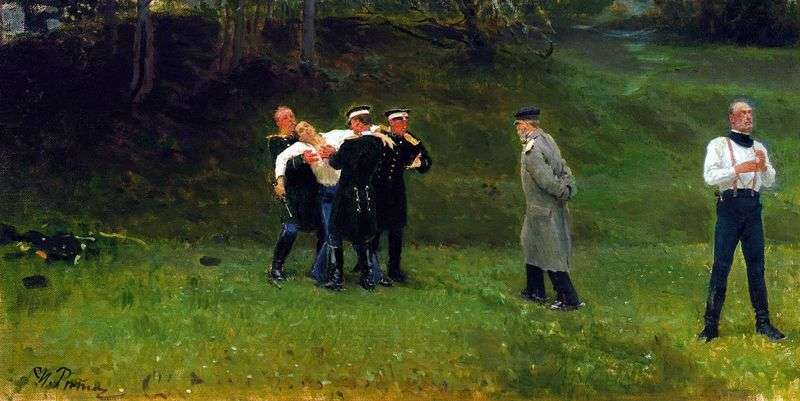
The genre picture depicts the participants of the duel after the event. The artist has written very expressively the faces of the participants, especially the wounded, who extends his hand asking for forgiveness and reconciliation.
Expressive and the figure of the second participant of the duel, depicted in the foreground to the right. Taking off his gloves, he turned his back on the wounded man, making it clear that the duel was over and the winner was he. His attitude is unwilling to accept reconciliation and pride. Whereas in the posture of a dying person – helplessness and hope.
Repin was inspired by the Tolstoyan idea of forgiveness and wanted to express its importance for society. L. Tolstoy sharply denied the practice of duels and insisted on human humanism. The theme and plot of the painting was based on a fact that was told to the artist by a military judge about the case that was settled in the court of Tula. The mortal offense rose between two men, and the one who had inflicted her was wounded in a duel, dying, realized everything and asked for forgiveness.
Of particular importance in the picture is the landscape. In addition to the bright green of the grass and the accurate transmission of the forest glade, a typical Repin feature was revealed in it. The trunks of the trees in the background are illuminated by a ray of sunshine. This was done masterfully and caused great admiration in Italy at the World Expo.
A steady term “Repin’s light” appeared. As a result, at that moment the picture remained in Italy, in a private collection.
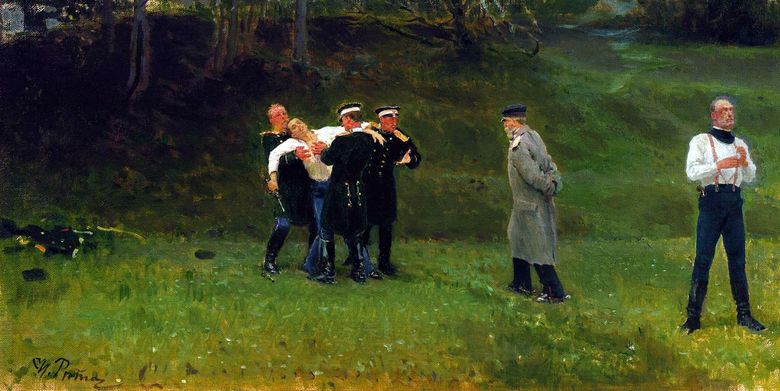 Duel – Ilya Repin
Duel – Ilya Repin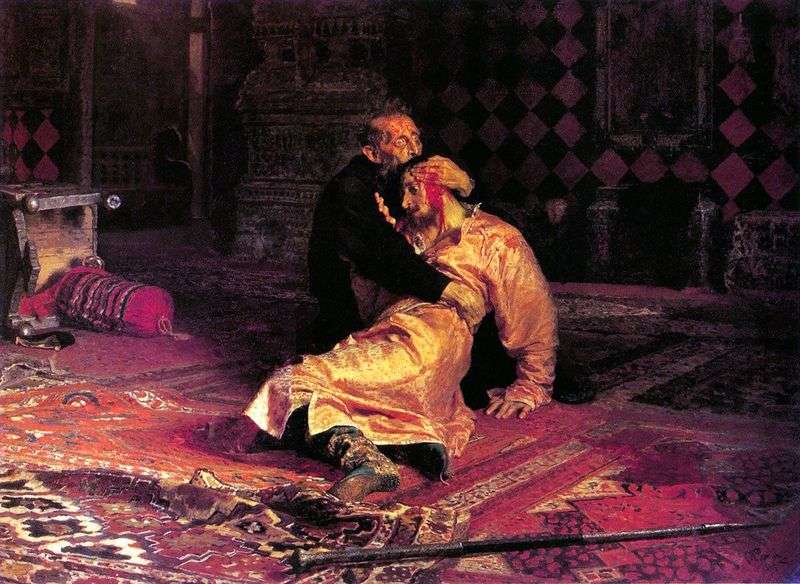 Ivan the Terrible and his son Ivan by Ilya Repin
Ivan the Terrible and his son Ivan by Ilya Repin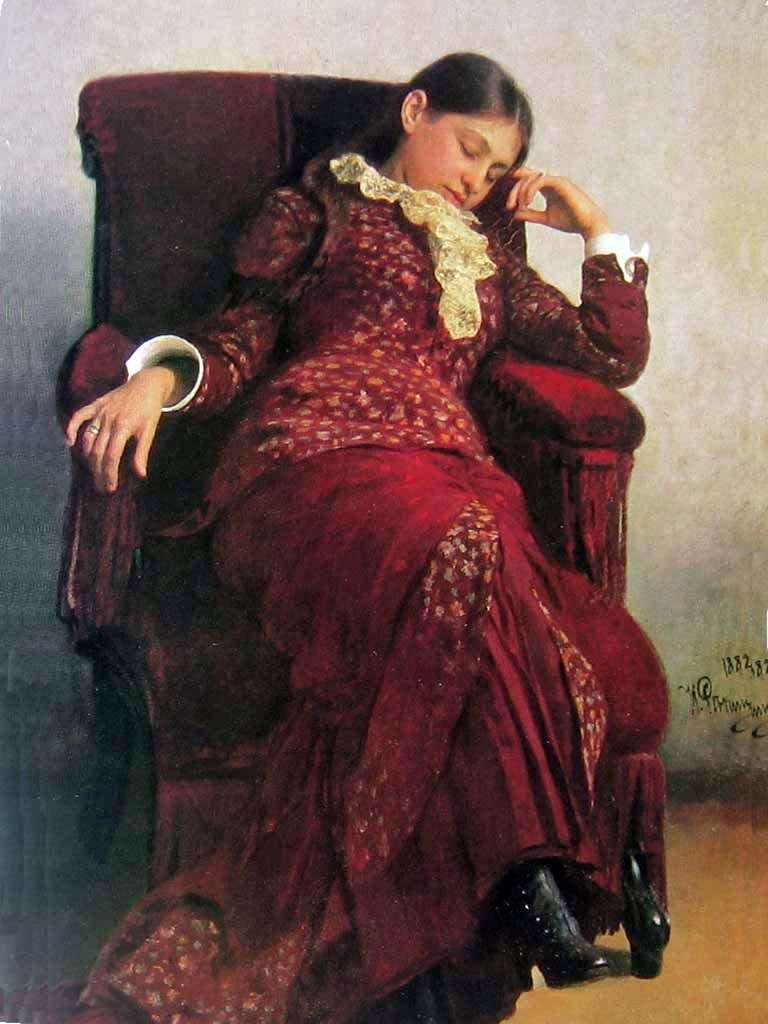 Rest by Ilya Repin
Rest by Ilya Repin Abramtsevo. Summer landscape by Ilya Repin
Abramtsevo. Summer landscape by Ilya Repin The ceremonial meeting of the State Council on May 7, 1901 by Ilya Repin
The ceremonial meeting of the State Council on May 7, 1901 by Ilya Repin Pavel Mikhailovich Tretyakov by Ilya Repin
Pavel Mikhailovich Tretyakov by Ilya Repin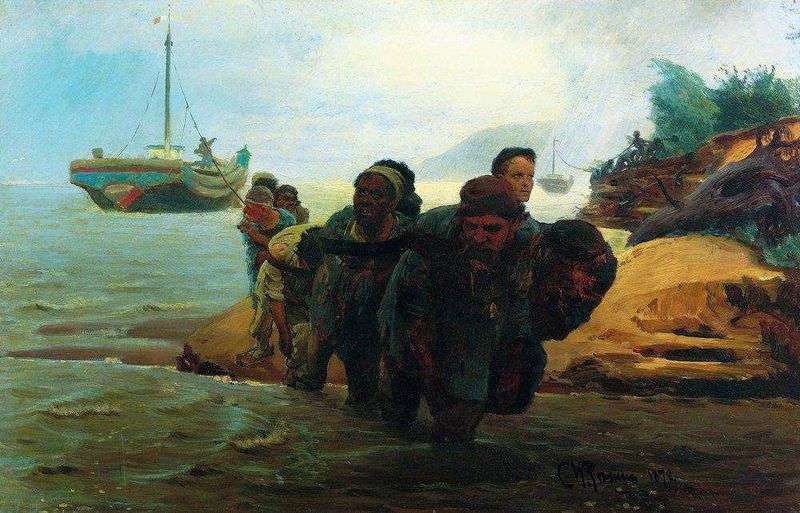 Wandering haulers by Ilya Repin
Wandering haulers by Ilya Repin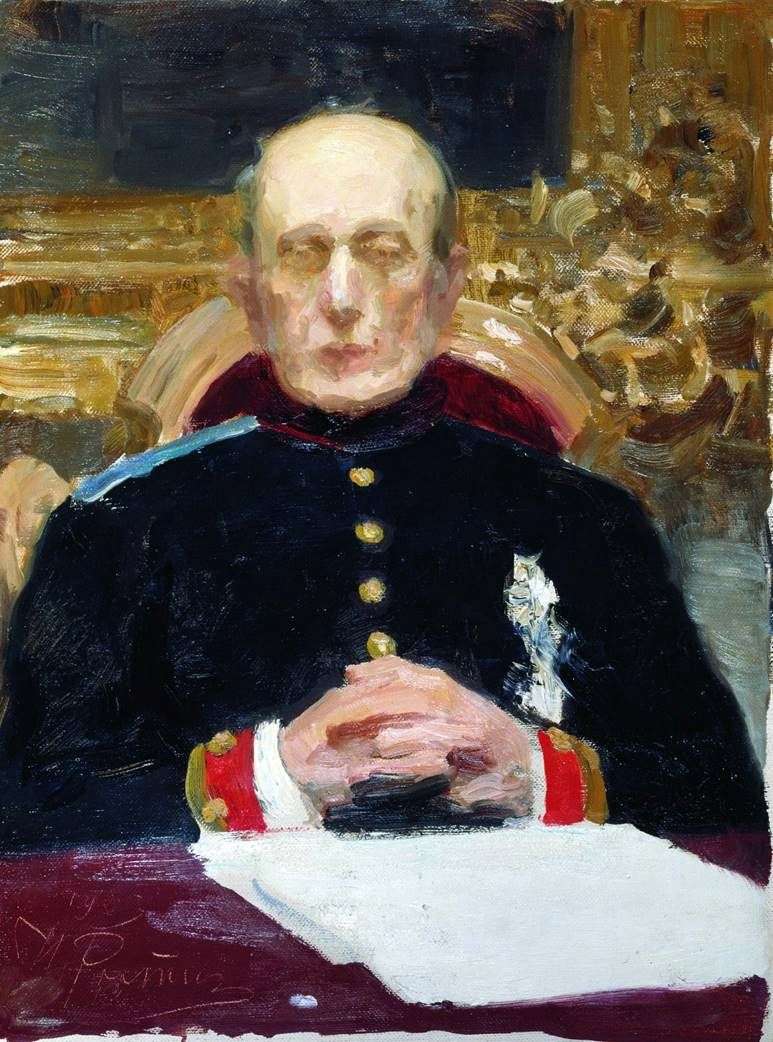 Portrait of K. P. Pobedonostsev by Ilya Repin
Portrait of K. P. Pobedonostsev by Ilya Repin